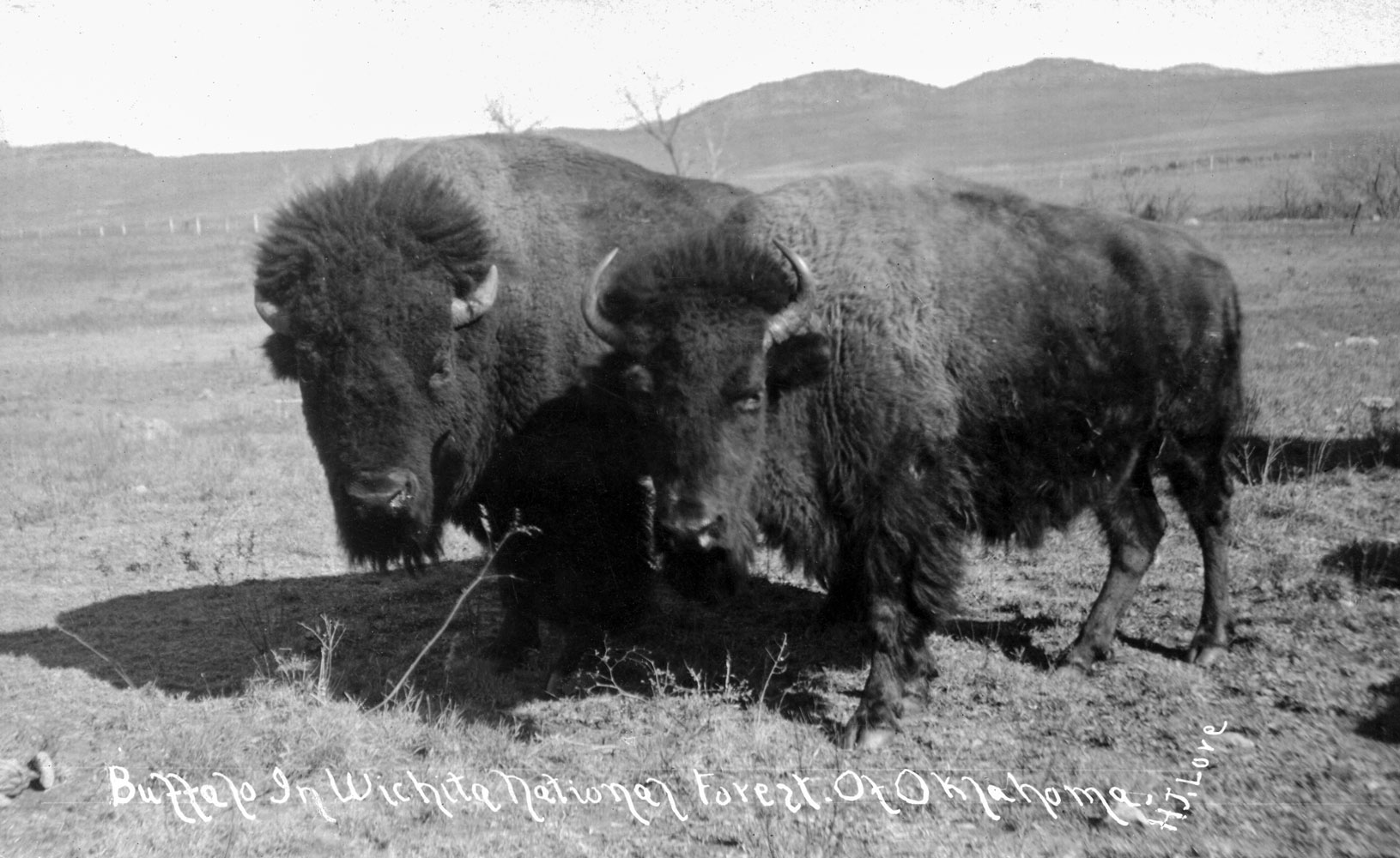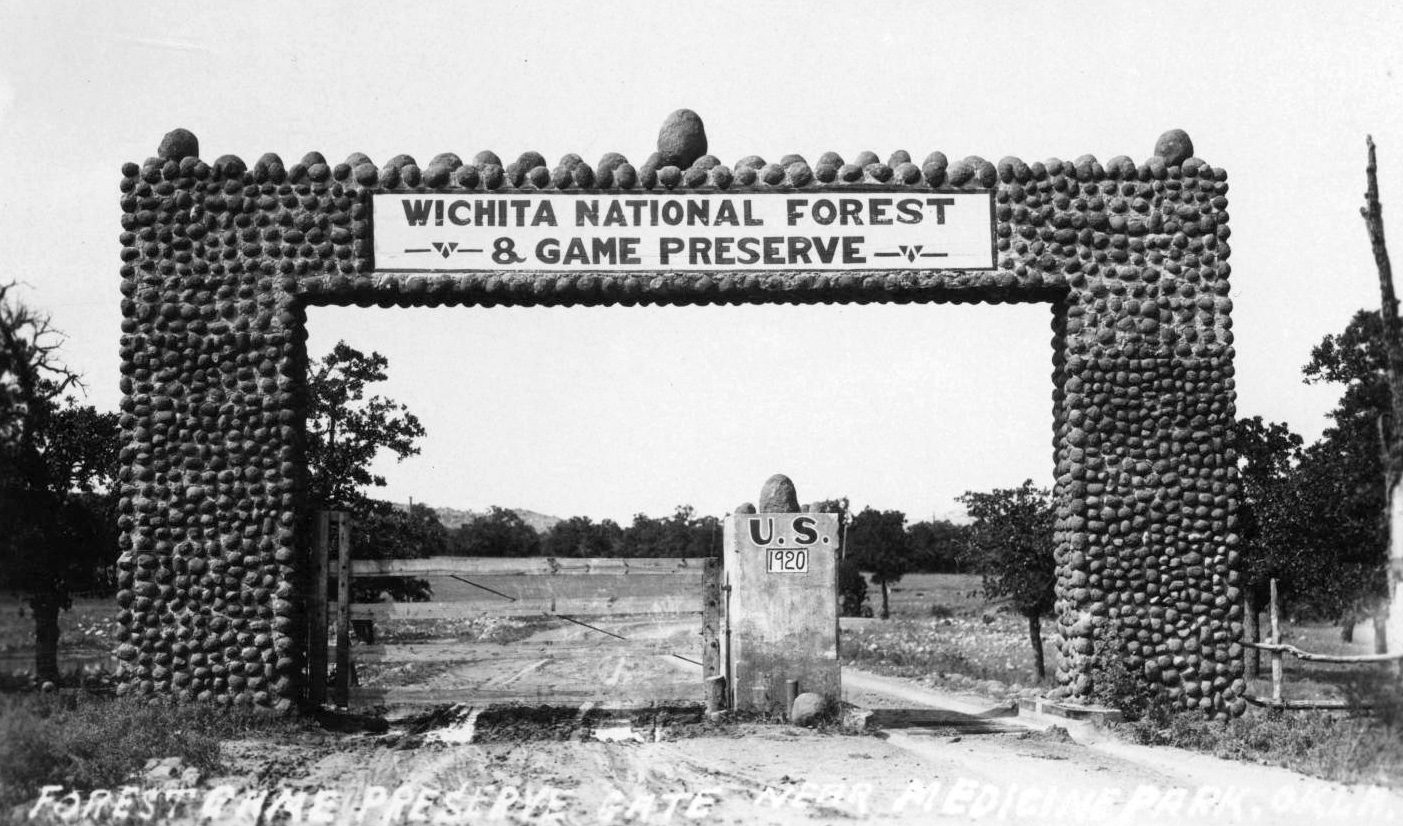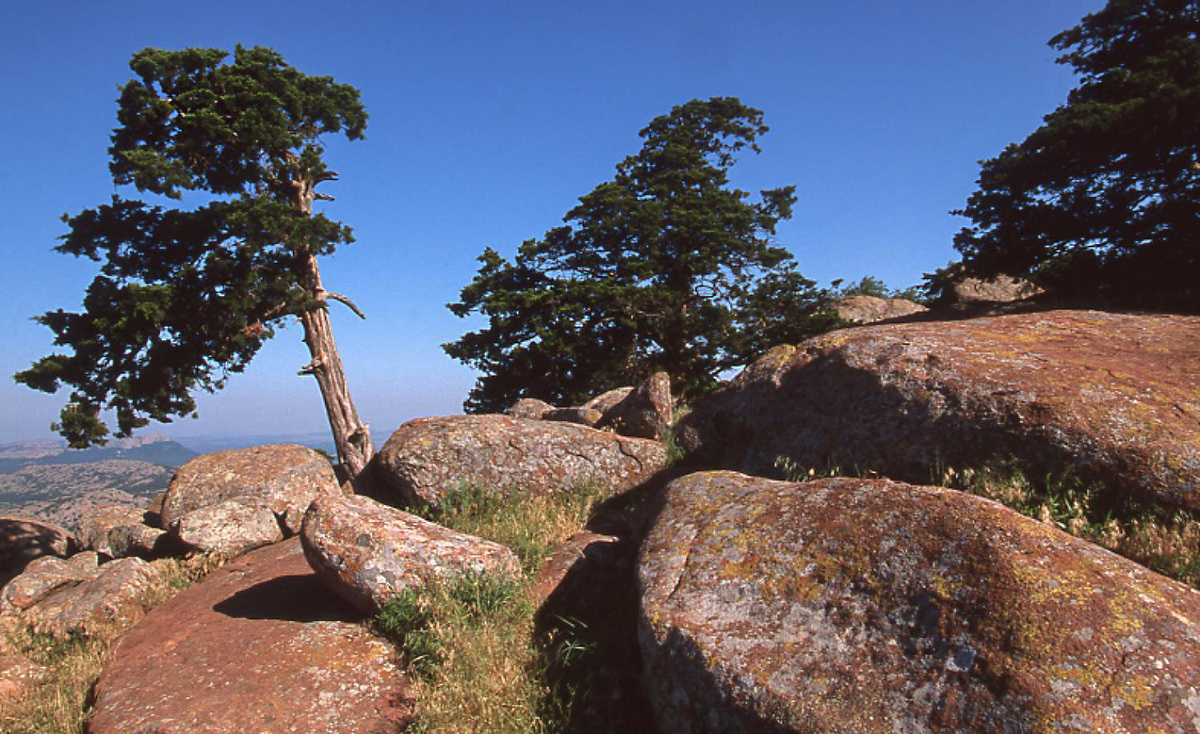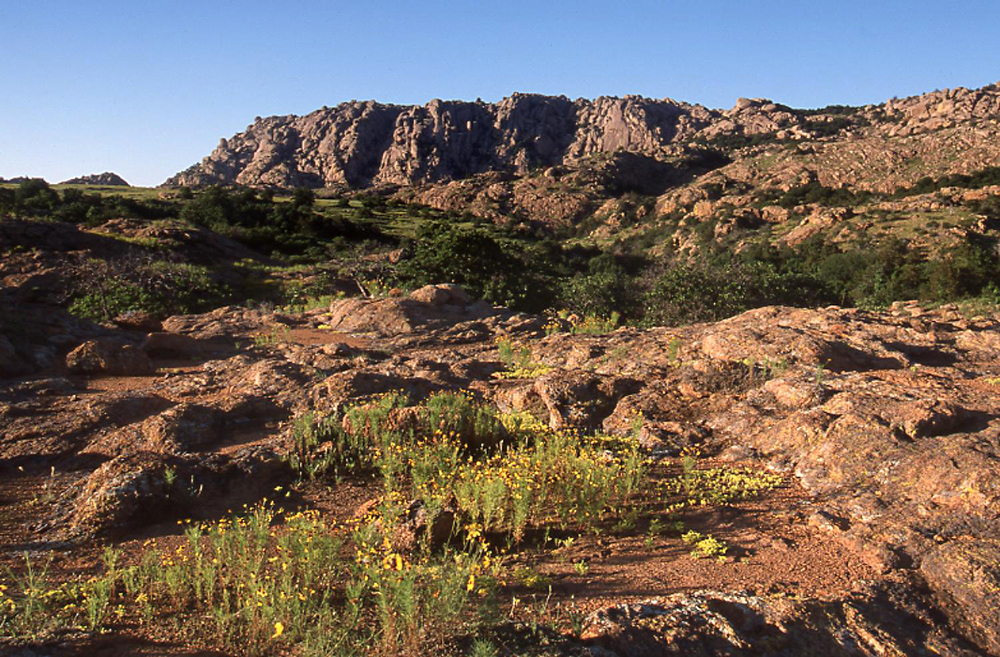The Encyclopedia of Oklahoma History and Culture
WICHITA MOUNTAINS NATIONAL WILDLIFE REFUGE.
In Comanche County in southwestern Oklahoma, the Wichita Mountains National Wildlife Refuge, Oklahoma's largest wildlife refuge, contains more than 59,000 acres. In 1901, prior to the Kiowa-Comanche-Apache Opening, Pres. William McKinley proclaimed a portion of the mountains as the Wichita Forest Reserve, assigned to the Forestry Division of the General Land Office of the U.S. Department of the Interior. In 1905 the reserve was transferred to the Bureau of Forestry under the U.S. Department of Agriculture. Later that year, after Congress passed a bill authorizing a federal wildlife refuge, Pres. Theodore Roosevelt issued a proclamation creating the Wichita Forest and Game Preserve as the nation's first big-game animal (and other native wildlife) refuge. Earlier, Roosevelt had established several national bird sanctuaries. In 1906 Roosevelt issued a second proclamation, adding 3,680 acres to the refuge. In 1907 the park became the Wichita National Forest and Game Preserve when all forest reserves were reclassified as National Forests. In 1936 Congress renamed the area the Wichita Mountains National Wildlife Refuge and transferred it to the Bureau of Biological Survey. In 1939 federal refuges moved back to Department of Interior control. In 1940 the Biological Survey and the Bureau of Fisheries combined to become the U.S. Fish and Wildlife Service, which continued to administer the Wichita refuge into the twenty-first century.
The establishment of a national preserve in southwestern Oklahoma culminated a regional movement to protect the shrinking bison population and to gain a national park for the imminent state. The Oklahoma City Commercial Club, one of the early and more influential groups, campaigned locally and nationally for the park. In 1905 the New York Zoological Park (later the Bronx Zoo) offered the federal government fifteen buffalo (American bison) to begin a herd for the refuge, if it agreed to fence the range. In 1907, after an eventful and delayed train trek across the country, the animals arrived to great fanfare. An American Indian contingent led by Quanah Parker greeted the newly arrived bison, and many of the elderly Comanche emotionally related stories of their experiences with the wild animals prior to their near extermination. Later the preserve successfully relocated elk, wild turkey, and a herd of Texas longhorn cattle to its prairie environment. The 1927 addition of longhorns to the "wildlife" refuge was made for their historical and cultural importance. More unsuccessful programs involved the addition of the American pronghorn antelope, bighorn sheep, and the prairie chicken. Native deer also flourish on parkland. Other mammals that can be seen at the refuge include prairie dogs, raccoons, bobcats, coyotes, and rabbits. The number of lakes and water features attract migratory birds, and eagles sometimes can be seen in the fall and winter. Annual auctions for the buffalo and longhorns help keep the herds at a set number, while controlled hunts of elk and deer check their populations.
The physical environment includes mixed prairie grasslands, with buffalo and grama short-grasses and bluestems, Indian grass, and switch-grass tallgrasses. Several mountains and rock features appear within the refuge, with Mount Scott as the highest point (2,464 feet above sea level), followed by Mount Pinchot (2,461 feet). There are numerous artificial lakes. The first, Lost Lake, was completed in 1926. Most were created during the 1930s under the Civilian Conservation Corps (CCC) or the Works Progress Administration (WPA). WPA workers also constructed the Holy City of the Wichitas, where an annual Easter pageant is performed. In 1938 a road to Mount Scott's peak officially opened. It was a joint project of the Public Works Administration, a private firm, and the WPA. The refuge is divided into a public use area and a special use area. The park also has two wilderness areas, the North Mountain Unit, with limited access, and the Charon's Garden unit, which allows photography, hiking, and camping.
By the twenty-first century more than one million visitors traveled to the park each year. Hiking trails include Dog Run Hollow, Elk Mountain Trail, Little Baldy Mountain Trail, and the Environmental Education Trail. Rock climbing and rappelling are popular activities. Also available is fishing, picnicking, and camping. There are periodic guided public tours of different aspects relating to the national preserve. The many roads allow excellent opportunity to view and photograph wildlife. In 1997 the refuge's visitor center opened, offering exhibits, artwork, and taxidermy, as well as a 112-seat auditorium.
See Also
ENVIRONMENT AND CULTURAL ECOLOGY, HOLY CITY OF THE WICHITAS PAGEANT, RECREATION AND ENTERTAINMENT, WICHITA MOUNTAINS
Bibliography
S. Matthew DeSpain, "For Society's Sake: The Wichita Mountains, Wildlife, and Identity in Oklahoma's Early Environmental History," The Chronicles of Oklahoma 78 (Winter 2000–2001).
Jack Haley, "A History of the Establishment of the Wichita National Forest and Game Preserve, 1901–1908" (M.A. thesis, University of Oklahoma, 1973).
Jack Haley, "The Wichita Mountains: The Struggle to Preserve a Wilderness, Part I," Great Plains Journal 13 (Fall 1973).
Jack Haley, "The Wichita Mountains: The Struggle to Preserve a Wilderness, Part II," Great Plains Journal 13 (Spring 1974).
Cora Miley, "Through Oklahoma's National Playground," Harlow's Weekly 21 (21 October 1922).
Citation
The following (as per The Chicago Manual of Style, 17th edition) is the preferred citation for articles:
Larry O'Dell, “Wichita Mountains National Wildlife Refuge,” The Encyclopedia of Oklahoma History and Culture, https://www.okhistory.org/publications/enc/entry?entry=WI003.
Published January 15, 2010
© Oklahoma Historical Society





